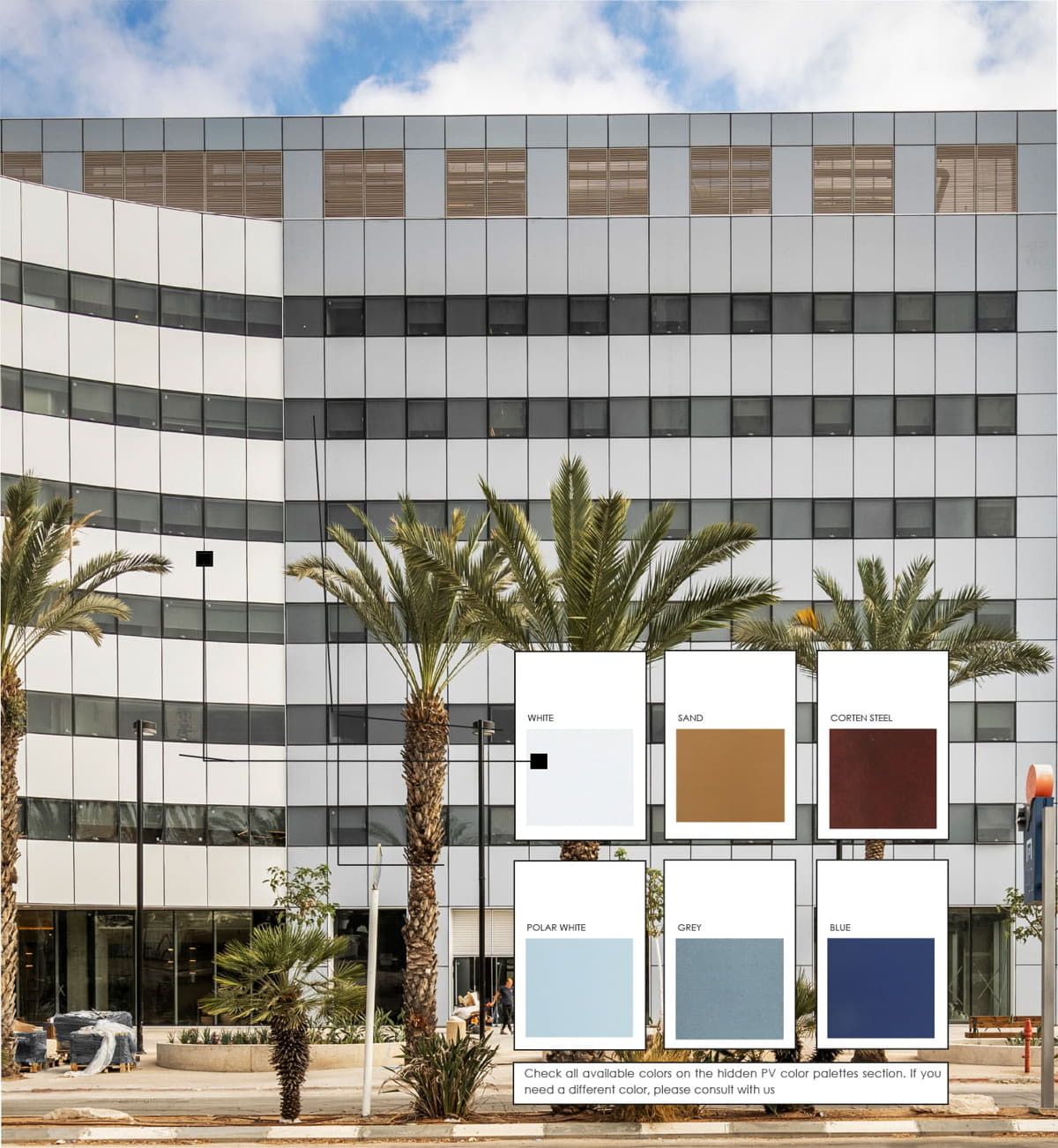BUILDING INTEGRATED PHOTOVOLTAICS BIPV or Conventional Solar Panels ?
Solar panels function separately from primary building elements, typically overlapping with existing materials, resulting in distinct entities and cost centers. Conversely, our photovoltaic glass is viewed as a primary building envelope component, seamlessly integrating into the structure while generating clean power. A truly building-integrated photovoltaic application offsets the expense of alternative conventional construction materials.

USABLE AREA/TOTAL SYSTEM SIZE
Numerous buildings face constraints on available roof space for traditional solar panels. However, Photovoltaic glass offers a solution by tapping into the solar power generator potential of the entire building envelope. In rooftop applications, photovoltaic glass panels can be designed to withstand foot traffic, maximizing the area available for photovoltaic installation. Façades, on the other hand, present even greater opportunities, potentially providing a tenfold increase in energy generation. This is achievable because photovoltaic glass can be seamlessly integrated across entire curtain walls and cladding areas, among other applications.
AESTHETICS
In the building-integrated photovoltaic market, design flexibility is paramount for success. Architects vary greatly in their preferences, requiring products tailored to their unique needs, functions, and aesthetic sensibilities. Onyx Solar has dedicated substantial efforts to product development over the years, subjecting each photovoltaic glass design to rigorous testing through exhaustive R&D programs. The result is a diverse range of unique products that offer extensive aesthetic possibilities for clients of all kinds. From shape and size to thickness, configuration, color, and texture, Onyx Solar provides a plethora of customizable variables to choose from.
CLASS A FOR FIRE RESISTANCE
Our Photovoltaic glass is classified as CLASS A for fire resistance, meaning it is non-flammable and ideal for construction projects, ensuring both safety and efficiency. Unlike any solar panel which at best are classified as C or D, offering a significant advantage in terms of safety and performance.
COST IMPLICATIONS
It is important to understand that our photovoltaic glass is a building material in itself. Conventional photovoltaic installations require an additional building structure, such as a roof structure underneath. The combined cost of these building materials along with conventional panels is much higher than installing a building material with integrated photovoltaic properties. In this context, it is important to emphasize that our building materials serve a dual function: they act both as building material and as solar power generator. Moreover, such applications often qualify for substantial tax credits and incentives across various markets, rendering them unbeatable in terms of ROI and payback.
IS OUR PHOTOVOLTAIC GLASS AFFORDABLE?
"The economics of replacing the existing glass with photovoltaic glass were shockingly affordable. Most likely more affordable than simply cleaning and replacing existing glass with simple glass ".
Ralph Zucker · CEO Bell Labs · USA
